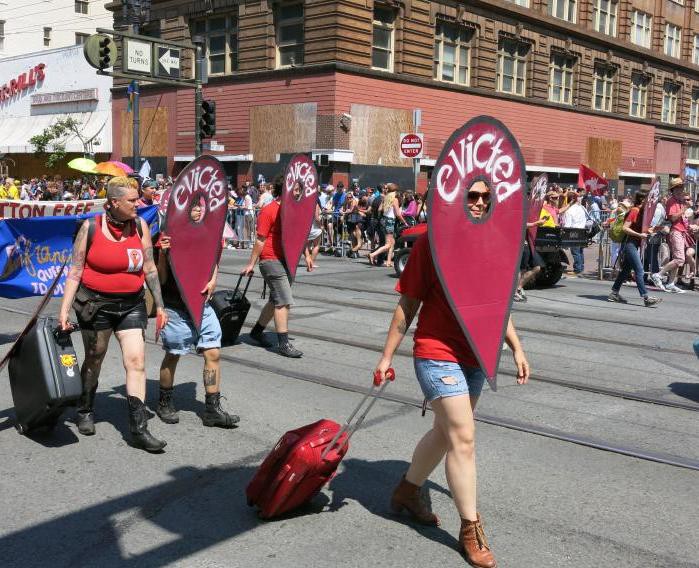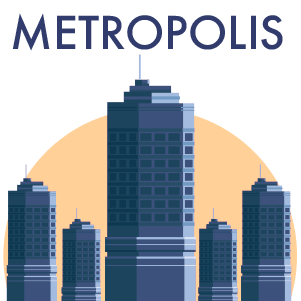

Check your phone just about anywhere in Harlem and you’ll find free wireless Internet. Harlem, N. Y., is now home to the largest continuous free Wi-Fi network in the United States, spanning 95 blocks in total.
Announcing the project in 2013, the chairman of the New York City Housing Association, John Rhea, promised more than 13,000 public housing residents would benefit. The scheme, aimed at tackling the so-called digital divide in this historically lower-income area, also includes vans stocked with computers and printers offering wireless internet access, as well as advice for people about paying bills, writing resumes, and filling out tax returns.
From Old Street roundabout in North London to Kenya’s billion-dollar tech sector in Nairobi, governments all over the world want to create the next Silicon success story. The popularity of the tech hub as a tool for local regeneration shows no signs of abating soon. Free wireless internet is part of New York City’s drive to turn Harlem into the latest urban tech hub. Silicon Harlem, the social venture charged with delivering on the plan, believes it has the potential to lower, “if not eradicate,” crime, while improving unemployment rates and creating quality job opportunities. The first step in delivering on this ambitious list is increasing internet access.
At minimum, the ability to get online is required for essential tasks like paying bills and doing homework, but the city also hopes it will increase local capacity to collaborate on business and cultural projects. “The free Wi-Fi in Harlem will enable our neighbors to get connected to resources and mentors in our community and around the world,” said Ali Florian. “[This] means more efficient innovation [and] stronger growth for businesses and organizations, which helps us to build a stronger Harlem.”
Florian, who grew up in the neighborhood, is the community manager for Harlem Garage, an incubator for local tech startups and other small businesses. It provides cheap office space and free events offering advice on matters such as pitching ideas or offering support to moms balancing family life with starting a business.
Creating a tech boom in Harlem that will benefit local people depends on much more than just internet access and good ideas, though. Harlem’s tech hub plan is occurring against a backdrop of uneven economic development and gentrification. A recent study from the City University of New York shows average earnings in Central Harlem increased by 47.5 percent between 1990 and 2011, while income inequality doubled.
Higher average incomes have led to much higher rents. Rents rose faster in Harlem in 2013 and 2014 than in any other part of Manhattan, increasing by 16.2 percent–from $2,313 per month to $3,465. Gwen Goodwin, the Democratic City Council candidate for East Harlem, said she is not against the tech initiative, but maintains that without basic safety nets, it has little chance of helping those who need it most.
“There’s also a lot of young kids who are students living four to [an] apartment, barely getting by. They are in decontrolled apartments and the landlord can jack up the rent whenever,” she said. “If we got the rents under control we wouldn’t have to worry about gentrification.”
In other cities where tech hub projects are more advanced, the tech industry is at the heart of gentrification disputes. San Francisco’s Google buses have become infamous as activists complain about regeneration and worry a two-tier system of opportunity and wealth is forming around tech growth.
In the London Borough of Hackney, campaigner and journalist Kirsty Styles says it’s not clear whether the opportunities of the city tech boom are reaching the native residents of London’s “Silicon Roundabout” either. But people are trying to take action. Styles is part of Our City, a project aiming to bridge the divide between locals and the new residents of Tech City, and encourage businesses to foster talent locally rather than look abroad to fill skills shortages. Styles said, “Tech could offer an opportunity to capitalize on the U.K.’s past engineering glories, transforming them for the 21st century and ensuring young people have a fulfilling future.”
Kenya’s government, meanwhile, has been criticized for very different reasons. It is building a gleaming new tech town, Konza Techno City, 37 miles outside the capital city, Nairobi. Given that Nairobi has provided cheap digs for Kenya’s fast growing tech scene, entrepreneurs are asking why the government isn’t just investing the $14 billion construction it’s expected to cost and incentivizing investment in new startups.
In these early stages at least, New York City appears to be working to ensure the community is included in its vision for a tech hub. Free Wi-Fi is the beginning of its tech plan, and Harlem Garage is part of a drive to foster local talent. “Harlem Garage has worked with the city to create a venue for local entrepreneurs to stay right here in Harlem to build their companies, without having to go to Midtown in order to find the resources they need to innovate,” Florian told me. “Harlem Garage is very much Harlem: owned, staffed, and occupied by people in our community.”
Other attempts to attract new business have been met with severe criticism. Large chains like the supermarket Target and wholesaler Costco have set up in Harlem. Some argue that the big stores create jobs and help lower local food prices, but unions say big-box corporations displace small businesses and depress wages. Can tech do something different? Sophie Fader, co-founder of Harlem App Collective, believes so.
“A lot of jobs in tech don’t require you to have graduated from high school or college if you have the expertise,” she said. “There is a lot of discussion about how to tap into that in New York. I heard about one pilot program that would provide tech internships for students who are expected to fail high school. One of our goals is to help participate in that change.” As well as teaching young people skills like coding, Harlem App Collective also advises local businesses on software development.
Like Fader, Kofi Kankam rents space in the Harlem Garage. Kankam is the founder of Admit.me, a free online platform offering advice to students interested in applying to college and graduate schools. “Kids in Harlem grow up right by Columbia University but still may not understand the resources available to them,” he said. “I believe organizations have a responsibility to be active members of the community and talking to local people is just the start. It’s not easy to do, but to ensure they have a true impact, they should seek to offer structured opportunities.”
These startups are serious about having a relationship with their community in Harlem, but education by itself isn’t enough to encourage native businesses to grow. Derek Hyra, director of the Metropolitan Policy Center at American University, said that while tech businesses typically have lower capital and credit requirements to start up, just getting credit has become increasingly challenging for small businesses since the 2008 financial crisis, especially for African Americans.
“The proportion of U.S. Small Business Administration loans going to African-American businesses has decreased by half since 2009,” said Hyra. “Without steps to change this, there is a danger that African-American small businesses will have a more difficult time securing credit in Harlem compared to white-owned startups.”
As cities all over the world are realizing, just adding tech is not a good recipe for regeneration. A host of challenges face lower-income individuals who want to take part in the new opportunities tech provides–credit, the right education, early engagement, meaningful opportunities, secure housing, access to reliable internet connections. If governments, banks, and businesses are serious about bringing about equitable regeneration, creating tech hubs can only be part of the plan.


How We Get To Next was a magazine that explored the future of science, technology, and culture from 2014 to 2019. This article is part of our Metropolis section, on the way cities influence new ideas–and how new ideas change city life. Click the logo to read more.
